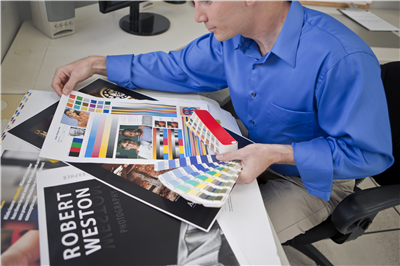During an update of a Graphic Arts Orientation Workshop for RIT, I stumbled across an interesting article on how ads in print are more effective because they stimulate multiple senses such as vision and touch. I’ve read articles on this subject before but did not pay much attention to it. It was only after reading books with my one-year-old granddaughter and watching how she prefers pages that have texture that I decided to look into this further.
Researched mostly in Europe, there is growing interest in what is called ‘sensory’ or ‘multi-sensory marketing’. Like other forms of marketing, the goal is to engage the target audience. Recently PHD, Newsworks and UCL presented facts about the importance of touch in the study Touching is Believing.
When 272 newspaper readers read the same newspaper in print, on a computer and on a tablet, those that read and touched the printed version reported:
- Ads and brands felt more trustworthy and sincere
- Heightened perceptions of brand confidence and reliability
- Increased scores for customer satisfaction and likelihood to recommend

The printed ad was considered: more honest, engendered more confidence, more reliable and resulted in higher satisfaction.
Although lower, the newspaper read on a tablet increased key brand metrics including perceptions:
- 5% high quality
- 5% well known
- 5% said reflects my image positively, people I know would like
- 6% more likely to try the brand
- 15% prefer to buy even if a similar brand is cheaper
There are stories about Land Rover mailing pieces that could be eaten, a Fanta advertisement that could be tasted, McCain Foods releasing the aroma of baked potatoes in bus stops, and Dunkin’ Donuts releasing coffee aroma in buses when they play their jingle and increased sales 29%.
What are the Implications?
- If your print ads are struggling to compete with digital advertising alternatives, consider testing ads with tactility in mind.
- Touch may become a more important attribute in an increasingly virtual world.
- We are bombarded with messages, but touch can create a halt, give us time to connect, let us get back in contact with reality.
- Media planning tends to focus on the head and the heart, the rational and emotional. We now need to add a third element – touch – which links both of these. It creates tangibility and believability. And it simultaneously links our senses directly to our emotions.




I think if you could add Holographic Images to this you would have an even better chance of reply’s.
https://video.search.yahoo.com/yhs/search?fr=yhs-mozilla-004&hsimp=yhs-004&hspart=mozilla&p=magic+leap#id=1&vid=967316572fd1306ab76d0be86a96dc35&action=click
Thanks for sharing.
Thomas